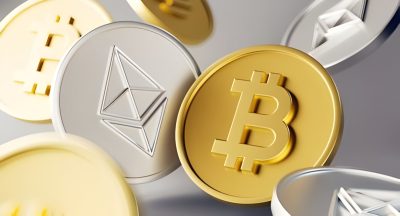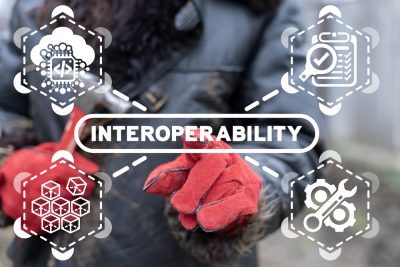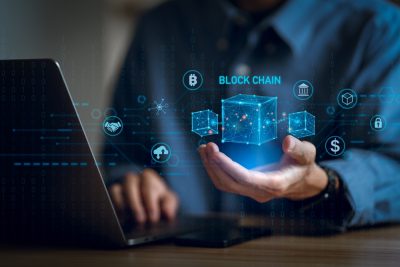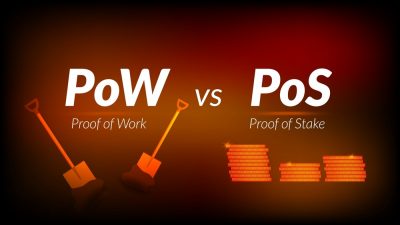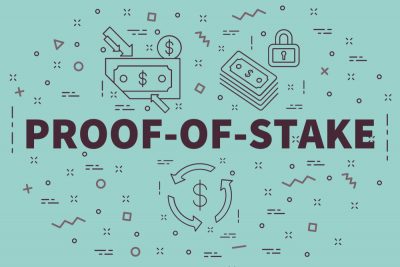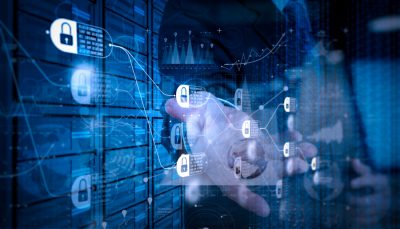Highlights:
- Decentralized applications typically utilize self-executing smart contracts with predefined rules encoded on the blockchain to automate processes and facilitate peer-to-peer interactions.
- dApps leverage blockchain technology, which employs cryptographic techniques to secure transactions and data.
A novel approach to constructing highly scalable and profitable applications is on the horizon. Bitcoin and emerging blockchain trends initiated this development with cryptographically secure ledger, limited-asset structure, and peer-to-peer framework. These attributes serve as the foundation for a novel software category known as decentralized applications (dApps).
While they are currently receiving attention from the media, they are poised to surpass even the most modern applications and architectures in the future.
What is a Decentralized Application?
Unlike traditional applications that rely on centralized servers and storage and intermediaries to function, dApps operate on decentralized networks, such as blockchain platforms. These applications leverage the distributed nature of blockchain technology to remove single points of failure and increase transparency, security, and autonomy.
Decentralized applications typically utilize self-executing smart contracts with predefined rules encoded on the blockchain to automate processes and facilitate peer-to-peer interactions. Examples of dApps span various industries, including finance, social networking, gaming, and supply chain management.
dApps leverage blockchain technology for transparent, trustless interactions, while smart contracts automate processes, ensuring integrity in the decentralized ecosystem.
How do Decentralized Applications Work?
dApps use smart contracts, which are self-executing contracts with the terms of the agreement directly written into code. Smart contracts automate processes and enforce rules within the dApp, eliminating the need for intermediaries and reducing the risk of fraud or manipulation.
Users interact with decentralized application architecture through decentralized interfaces, such as mobile or web applications, which connect to the underlying blockchain network. Transactions and data recorded on the blockchain are transparent and immutable, meaning they cannot be altered or tampered with.
This decentralized architecture ensures that dApps are censorship-resistant, transparent, and secure, offering users greater control over their organization’s digital assets.
Some of the most famous decentralized applications have revolutionized the blockchain space. From gaming platforms to financial solutions, these well-known dApps epitomize innovation, transparency, and decentralization in the digital realm.
Most Popular Decentralized Applications
A diverse array of notable dApps exist, each offering unique functionalities and innovative solutions within the decentralized landscape.
-
OpenSea
This decentralized application platform fosters cross-game interaction within the blockchain ecosystem. Players can swap their in-game collectibles across multiple cryptocurrency-based games through OpenSea. At present, this dApp exclusively accommodates collectibles from Ethereum games; however, there are intentions to broaden its support in the forthcoming updates.
-
Cryptokitties
It is an engaging modern application designed for entertainment purposes. Within the app, users can purchase adorable virtual kittens using cryptocurrency, subsequently breeding and selling them to earn a profit potentially.
Remarkably, the popularity of these charming felines transcends traditional boundaries, as evidenced by CryptoKitties’ significant impact—once contributing to 10% of daily Ethereum transactions, illustrating the widespread appeal of these digital pets within decentralized blockchain applications.
-
WINk
This stands out as the leading decentralized application for a diverse range of speculation games available in the market. Its offerings span from poker and dice games to sports betting, catering to a broad spectrum of preferences.
Built on the TRON platform, WINk rewards betting victors with WIN tokens, which can subsequently be traded for BTT—a cryptocurrency akin to Bitcoin—providing users with a seamless and rewarding gaming experience within the TRON ecosystem.
Ethereum: Decentralized Application Design and Development
These dApps are constructed atop the Ethereum platform, harnessing its robust features and functionalities. Leveraging the Ethereum blockchain’s capabilities, dApps execute their logic through smart contracts—self-executing agreements with predefined conditions encoded into their code.
These next generation smart contracts and decentralized application platforms facilitate automated and trustless transactions, ensuring transparency and security within the decentralized ecosystem. Deployed on the Ethereum network, these dApps utilize its blockchain infrastructure for storing and managing data in a decentralized and immutable manner.
This distributed ledger technology guarantees the integrity and reliability of information, fostering a tamper-proof environment conducive to a wide array of decentralized applications and use cases.
Fundamental distinctions between centralized and decentralized applications unveil the governance structure determining the essence of control and trust within digital business ecosystems.
Difference between Centralized and Decentralized Applications
Centralized apps are controlled by a single entity, often a company or organization, dictating rules, policies, and operations. They rely on a central server or infrastructure, making them susceptible to downtime, hacking, or costly data breaches.
Users have limited control over their data, which the central authority manages, raising concerns about privacy and security. Additionally, centralized apps can be subject to censorship or content moderation, limiting freedom of expression.
In contrast, decentralized applications services operate on distributed networks, eliminating the need for central authority. They offer resilience to downtime, censorship, and hacking as they are distributed across multiple nodes. Users have greater control over their data stored on decentralized networks, enabling trustless transactions and censorship resistance.
dApps showcase a myriad of merits reshaping the digital landscape, from enhanced security and transparency to unprecedented levels of autonomy and efficiency.
Advantages of Decentralized Applications
Embracing dApps heralds a paradigm shift, presenting businesses and users with unparalleled merits for enhanced security, transparency, and efficiency in digital interactions.
-
Decentralization
dApps operate on decentralized networks, removing the need for a central authority or intermediary. This decentralization ensures greater transparency, security, and resilience against censorship or manipulation.
-
Transparency
Transactions and data recorded on the blockchain are transparent and immutable, meaning anyone can audit and verify. This transparency in decentralized finance applications fosters trust among users and reduces the risk of fraud or corruption.
-
Security
dApps leverage blockchain technology, which employs cryptographic techniques to secure transactions and data. This ensures that digital assets are protected from unauthorized access, hacking, or tampering.
-
Accessibility
Decentralized web applications are accessible to anyone with an internet connection, enabling users worldwide to participate in decentralized networks and access financial services, social networks, and other applications without barriers or restrictions.
A critical examination reveals inherent drawbacks that demand careful consideration in navigating the complexities of dApps.
Disadvantages of Decentralized Applications
Despite featuring numerous advantages, dApps also come with their own set of drawbacks that warrant careful consideration.
-
Scalability concerns
Many decentralized autonomous applications face scalability challenges, as blockchain networks can struggle to process a large number of transactions quickly and efficiently. This can lead to delays, congestion, and higher transaction fees during peak periods.
-
User experience issues
Some dApps may have a complex user interface or require users to navigate unfamiliar processes, which can deter mainstream adoption. Enriching the user experience of dApps is essential for broader acceptance and usability.
-
Governance and regulation glitches
The decentralized nature of dApps can make governance and regulation challenging, as there may be no central authority or legal framework to oversee or enforce compliance. This can lead to uncertainty and legal risks for users and developers.
-
Smart contract risks
While smart contracts automate processes and eliminate the need for intermediaries, they are not immune to bugs, vulnerabilities, or exploits. Flaws in smart contract code can lead to security breaches, financial losses, and reputational damage for decentralized blockchain applications and their users. Regular auditing and testing of smart contracts are essential to mitigate these risks.
Takeaway
Decentralized applications represent a transformative force in the digital landscape, offering a decentralized alternative to traditional centralized systems. With their reliance on blockchain technology and smart contracts, dApps ensure transparency, security, and autonomy in digital interactions.
From popular gaming platforms like CryptoKitties to innovative financial service solutions like Uniswap and governance platforms like DAOs, dApps are revolutionizing various industries and empowering users worldwide. While the benefits of scalable decentralized applications are substantial, including decentralization, transparency, and security, they also come with challenges, such as regulation issues and user experience concerns.
Nevertheless, as the dApp ecosystem continues to evolve and mature, it promises to unlock new levels of innovation, efficiency, and inclusivity in the digital economy.
Explore a wide selection of technology–related whitepapers for enhancing your knowledge and proficiency.































































